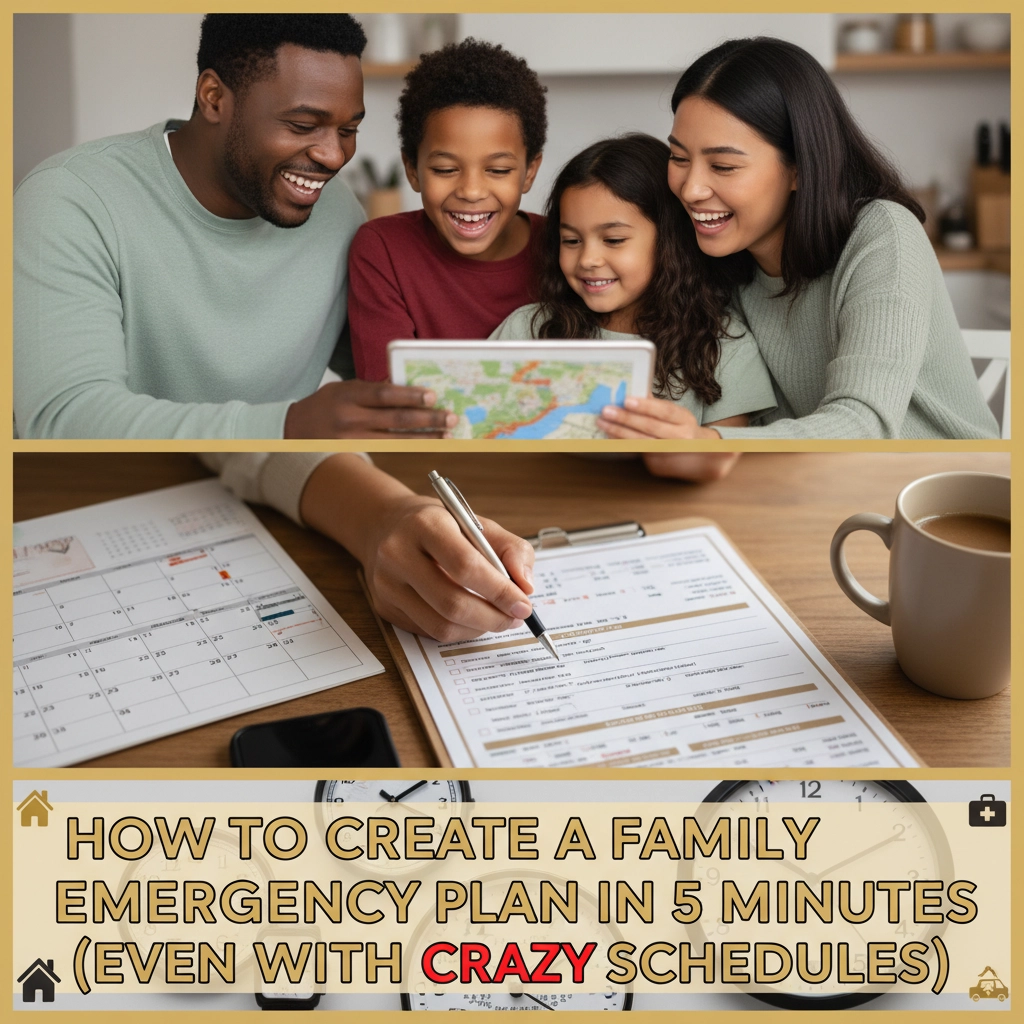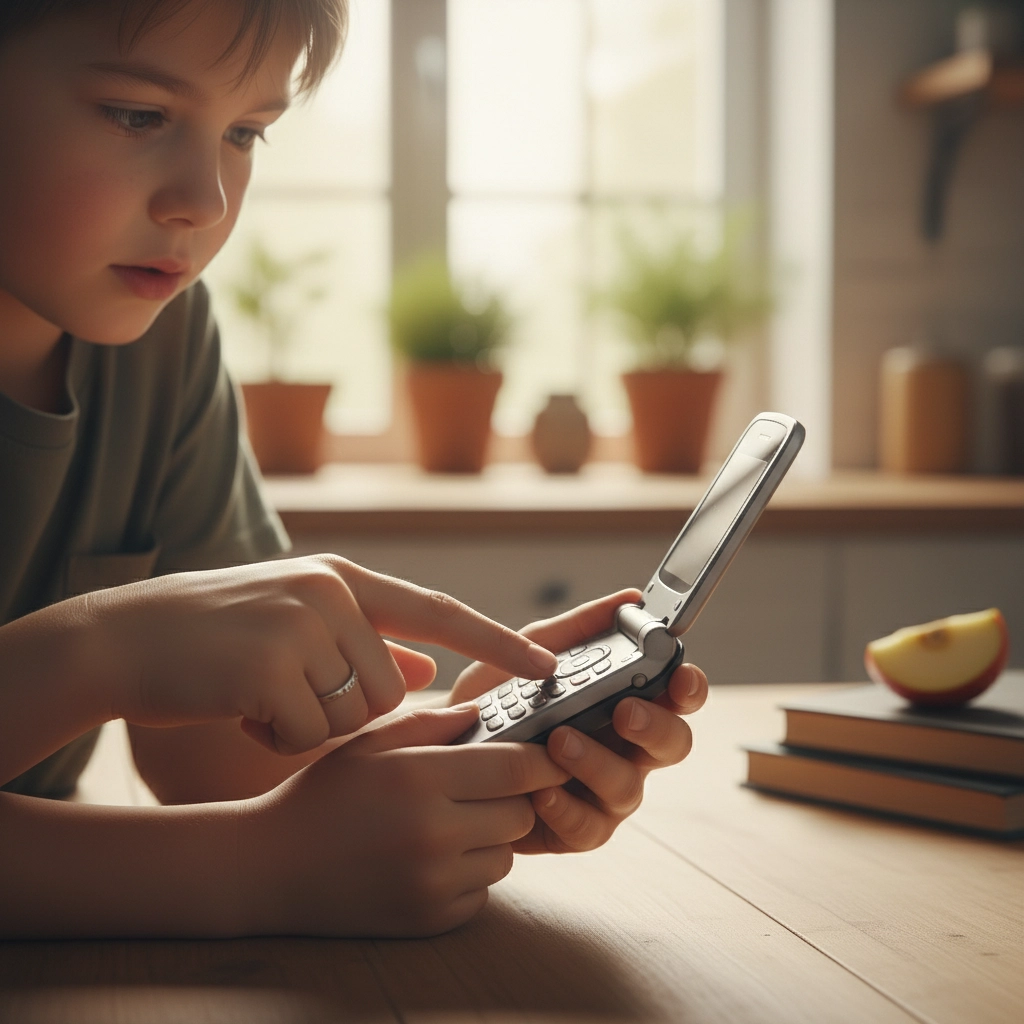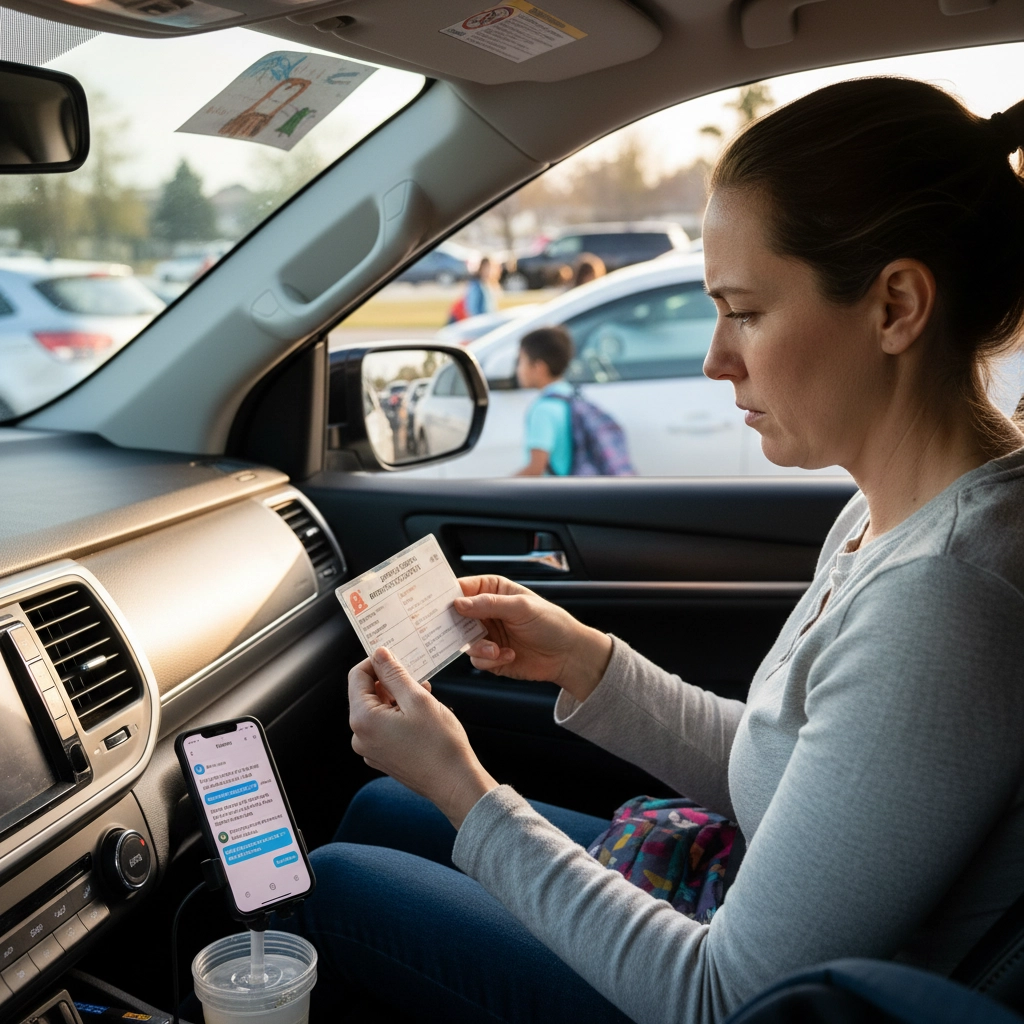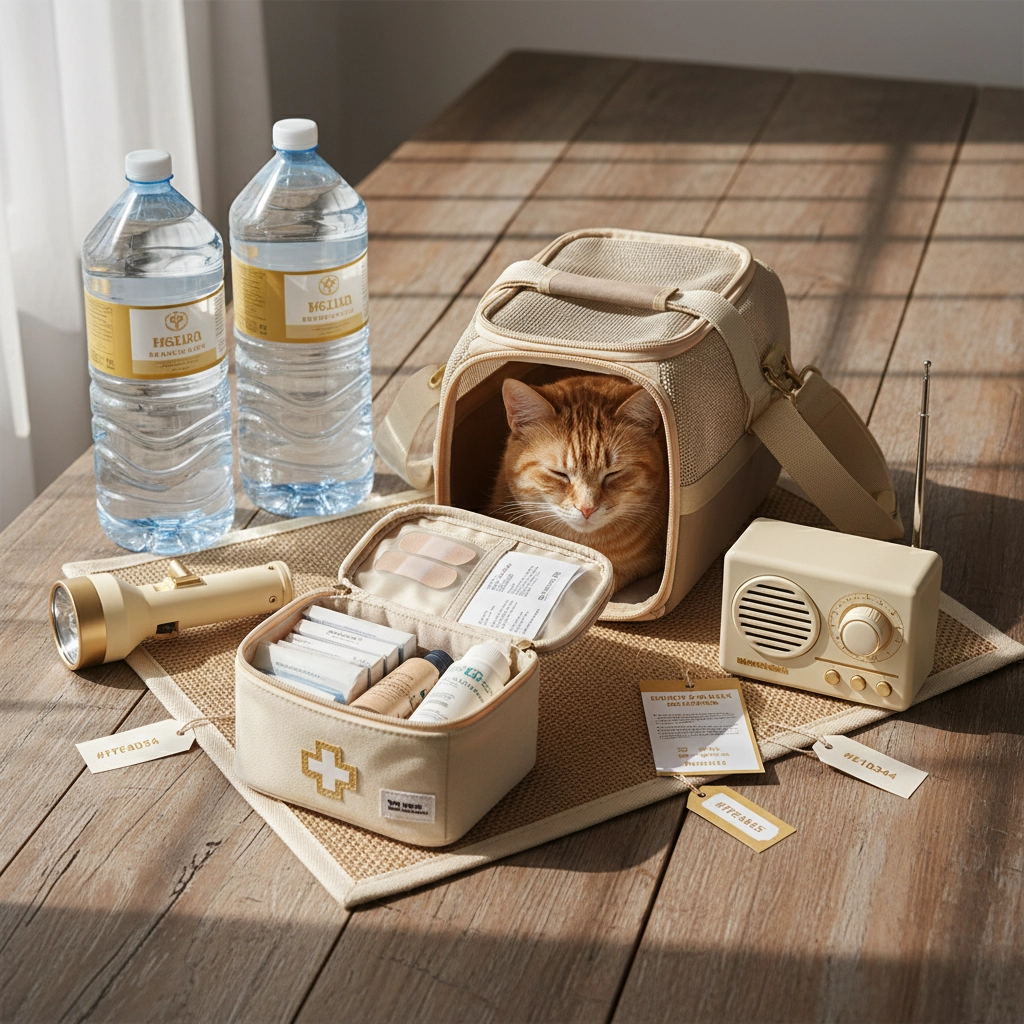
Let’s be real – between soccer practice, work deadlines, and trying to keep everyone fed, who has time to create an elaborate emergency plan? But here’s the thing: you don’t need hours of planning sessions or color-coded binders to keep your family safe. You can create a solid foundation for your family emergency plan in just 5 minutes, even with the craziest schedules.
As busy women, we’re masters at getting things done efficiently. Let’s apply that same energy to emergency preparedness. Because when disaster strikes, it won’t wait for you to have a free weekend to figure things out.
The Reality Check: Why 5 Minutes Beats Never
Perfect emergency planning that never happens helps no one. A simple plan that everyone knows and can execute? That’s gold. The truth is, most families don’t have ANY emergency plan, so spending just 5 minutes puts you ahead of 60% of households right there.
Your 5-minute plan won’t cover everything, but it will handle the most critical basics: how to communicate, where to meet, and who to contact. You can always build on it later, but these fundamentals will serve you well in most emergency situations.

The 5-Minute Framework: Three Essential Steps
Step 1: Establish Your Communication Hub (2 minutes)
Start with the most crucial element – how your family will find each other and communicate during an emergency. Designate an out-of-state contact person that everyone can reach. Why out-of-state? Local phone lines often get overloaded during disasters, but long-distance calls frequently go through.
Choose someone who’s organized and reliable – maybe your sister in another state or your best friend who lives across the country. Make sure everyone in your family has this person’s number memorized or stored in their phone under – and I’m sorry to use this acronym – “ICE” (In Case of Emergency).
Next, identify two meeting places: one near your home (like a neighbor’s house or local park) and one outside your neighborhood (perhaps a community center or school). If you can’t get home or your neighborhood is evacuated, everyone knows where to go.
Step 2: Quick Family Assignments (2 minutes)
Every family member needs a role, even the little ones. Adults should know who’s responsible for grabbing the emergency kit, important documents, and pets. Kids can be assigned to help younger siblings or carry a small bag.
Teach children how to dial 911 and make sure they know their full names, address, and your phone number. If they’re old enough, show them where the main water and gas shut-offs are located. These aren’t scary conversations – frame them as “being prepared” just like wearing seatbelts.

Step 3: Document the Basics (1 minute)
Write down the essential information on a small card for the fridge and in everyone’s phones:
- Out-of-state emergency contact
- Two meeting locations with addresses
- Local emergency services numbers
- Family members’ work and school addresses
Keep copies in multiple places – wallets, cars, emergency kits. Don’t overthink this part; a simple list on an index card works perfectly.
Making It Work with Your Crazy Schedule
Use Dead Time Strategically
Those 10 minutes waiting in the school pickup line? Perfect time to quiz the kids on your emergency contact. Stuck in traffic? Practice your evacuation route by taking different roads home. Folding laundry while binge-listening to podcasts (like mine)? Keep your emergency supply list handy and mentally inventory what you need.
Integrate with Existing Routines
Pair emergency planning with tasks you’re already doing. When you update your kids’ school emergency contacts, review your family plan. During seasonal chores like changing smoke detector batteries, spend those extra few minutes checking your emergency supplies.

The Bare Minimum Emergency Kit
You don’t need a bunker-worthy setup, but having these basics accessible can make a huge difference:
- Water (one gallon per person for three days – this is the bare minimum)
- Non-perishable food for three days
- Flashlight and batteries
- First aid kit
- Battery-powered or hand-crank radio
- Cell phone chargers (portable battery packs)
- Cash in small bills
- Important documents in a waterproof container or a closeable plastic bag
Store these items in an easy-to-grab container or tote bag. A large plastic storage tub works great and costs less than dinner out. For your important documents, if you keep them in a safe or office, place them in a folder right in front so you can grab and go.
Special Considerations for Busy Families
School and Daycare Plans
Find out your children’s schools’ emergency procedures. Where will they evacuate to? Who can pick up your child if you can’t? Most schools require an authorized pickup list, so ensure yours is current and includes multiple people.
Workplace Preparedness
Know your workplace evacuation procedures and keep comfortable walking shoes at your office. If public transportation is disrupted, you might need to walk home. Keep a small emergency kit in your car with water, snacks, and a phone charger.
Pet Considerations
Don’t forget your furry family members. Identify pet-friendly shelters or hotels outside your immediate area, and keep a carrier and leash easily accessible. Getting your pet microchipped and having a plan for who will care for your pets if you’re separated from them will increase their safety and the chances of being reunited with them once things settle down.

Testing Your 5-Minute Plan
Once a month, do a quick family drill. Time how long it takes everyone to get to your meeting spot from different starting points in your house. Practice your communication plan by having everyone call or text your out-of-state contact. Make it fun, not scary – maybe the fastest person gets to pick the movie for family night.
Building on Your Foundation
Your 5-minute plan is just the beginning. As time allows, you can expand it by adding more detailed evacuation routes, building a more comprehensive emergency kit, or creating specific plans for different types of disasters common in your area. You can get a copy of my Essential Prepper Checklist here for ideas, and use the password, StayReady.
The beauty of starting simple is that you’re not overwhelmed, and you actually DO it instead of putting it off indefinitely. Every family should have these basics covered, and now yours does.
Your Next Steps
Emergency preparedness doesn’t have to be another item on your impossible to-do list. With just 5 minutes, you’ve created a foundation that could save your family’s life. Start this week – grab an index card, gather your family for five minutes after dinner, and get the basics sorted.
Remember, the best emergency plan is the one your family actually knows and can use. Keep it simple, keep it accessible, and most importantly, keep it real for your lifestyle.
Want more practical preparedness tips that work for busy families? Check out my latest podcast episode where I dive deeper into emergency planning strategies, and don’t forget to subscribe to my YouTube channel and sign up for my newsletter for weekly underreported news delivered straight to your inbox. Because being prepared shouldn’t require perfect planning – it just requires getting started.
Thanks for reading! If this article has provided helpful information to you, please consider a tip. Just can the QR code. I appreciate you! —->



